single-chamber AAI mode
Tracing
Manufacturer Abbott
Device PM
Field Pacing Modes
N° 5
Patient
Same patient as in tracing 1; change of pacing mode (the leads function normally).
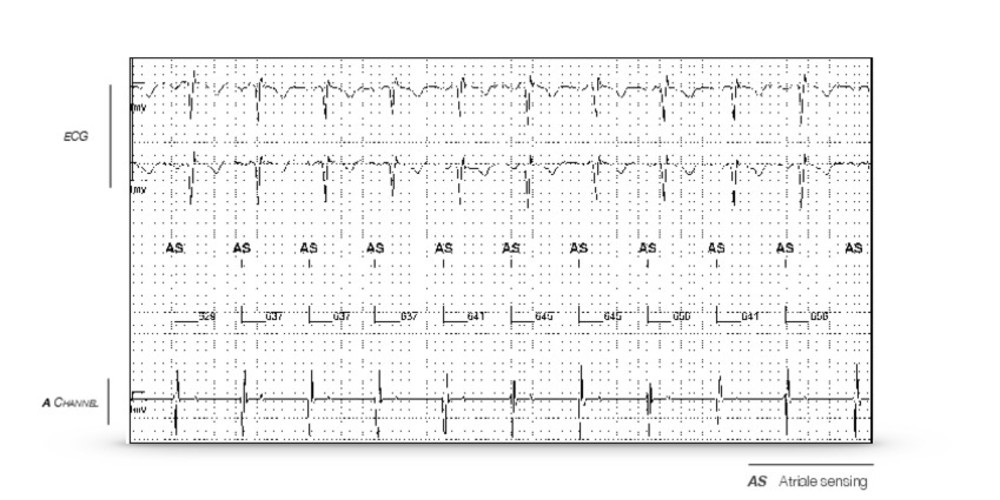
Graph and trace
Programming in AAI mode 60 beats/minute; sensing of a stable atrial activity with inhibition of pacing (it is therefore not an AAT or AOO mode); absence of sensing of QRS complexes (it is therefore not an ODO or VDD mode).
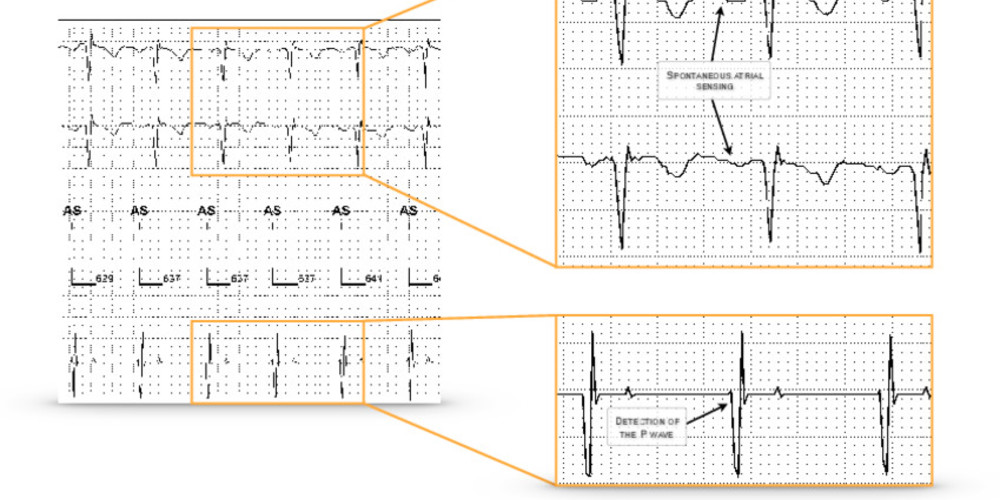
Other articles that may be of interest to you
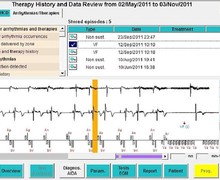
EGM recordings
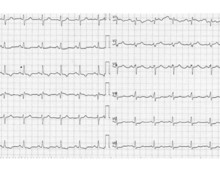
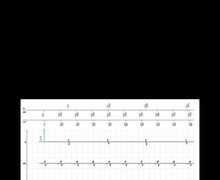




A single-chamber pacemaker operates in AAI mode when only one lead is positioned in the atrium; the AAI mode can also be programmed in a dual-chamber pacemaker. The AAI mode provides single-chamber atrial pacing at the programmed pacing rate unless inhibited by a sensed event. Sensing only applies to the atrium.
Single-chamber AAI pacemakers or AAI mode programming on a dual-chamber pacemaker are formally contraindicated in patients with a permanent or paroxysmal atrioventricular conduction disorder. They should also be avoided in patients with vagal symptoms or carotid sinus syndrome. The preferred indication is therefore pure sinus dysfunction without atrioventricular conduction disorder. An AAI pacemaker allows limiting the number of implanted leads, ensures a physiological rate at rest and during exercise after programming of the rate response and avoids any unnecessary ventricular pacing. A recent study, however, reported unfavorable results for the implantation of a single-chamber AAI pacemaker compared to the implantation of a dual-chamber pacemaker in patients with sinus dysfunction. Indeed, the rate of re-intervention was higher in patients implanted with an AAI pacemaker with the need to add a ventricular lead secondarily to the occurrence of an atrioventricular conduction disorder. More surprisingly, the incidence of atrial fibrillation episodes was also higher. The indications for implantation of a single-chamber AAI pacemaker are thus nowadays relatively limited.